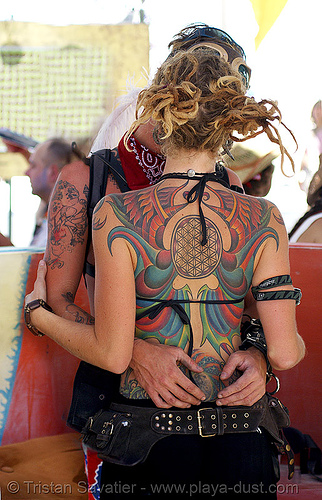 GREEN TARA [Sanskrit: Syamatara],
GREEN TARA [Sanskrit: Syamatara],Mudra [posture]: vitarka (argument) & varad (charity) mudra,
Symbol: Blue lotus [utpala].
Tibetan Lamaism considers Green Tara to be the original Tara. In fact, the Tibetan name for the goddess is do-ngon, which means 'the original Tara' but ngon, original has sometime been interpreted by some Lama with sngo, meaning 'green', and the epithet 'green' has become inseparable from this form of Tara, which symbolizes the Divine Energy.

Green Tara is represented seated on a lotus-throne, the right leg pendant, with the foot supported by a small lotus, the stem of which is attached to the lotus throne. She is slender, graceful in her pose, and dressed like a Bodhisattva and wears the five-leafed crown. These leaves of crown symbolize five Dhyani-Buddhas. Some time in her crown, the five Dhyani-Buddhas are figured.
Her hair is abundant and wavy. Her right hand is in varad or 'charity' mudra, and her left, which is in 'argument' mudra, holds the lotus.
She has two full open [human] eyes, where as her another manifestation the White Tara has seven meditation [half-closed] eyes. The goddess may also be represented with a small image of Amoghasiddhi [one of the five Dhyani-Buddhas] in her headdress.
 Tibetan Lamaism believed that Tara was incarnate in all good women, and in the seventh century they declared the two pious of the Tibetan Buddhist king, sRong-tsan-sgam-po, incarnations of Tara. She was then given two distinct forms: the 'white' believed to be incarnate in the Chinese princess Wen-ch'eng, daughter of a Chinese prince belonging to imperial family; and the 'green Tara', incarnate in the Nepalese princess Brikuti, daughter of the king Ansu Verman. Both queens are believed to have brought with them various scriptures, images of Buddha and cult to Tibet. She is regarded as mother of all Buddha and savior of all sentient beings from worldly miseries.
Tibetan Lamaism believed that Tara was incarnate in all good women, and in the seventh century they declared the two pious of the Tibetan Buddhist king, sRong-tsan-sgam-po, incarnations of Tara. She was then given two distinct forms: the 'white' believed to be incarnate in the Chinese princess Wen-ch'eng, daughter of a Chinese prince belonging to imperial family; and the 'green Tara', incarnate in the Nepalese princess Brikuti, daughter of the king Ansu Verman. Both queens are believed to have brought with them various scriptures, images of Buddha and cult to Tibet. She is regarded as mother of all Buddha and savior of all sentient beings from worldly miseries.Tara Mantra by Ani Choying Drolma (Dolma)
OM TARE TUTTARE TURE SOHA

Some Silver Bangle With TARA MANTRA (*NEW arrived)



OM represents Tara's sacred body, speech and mind.
TARE means liberating from all discontent.
TUTTARE means liberating from the eight fears, the external dangers, but mainly from the internal dangers, the delusions.
TURE means liberating from duality; it shows the true cessation of confusion.
SOHA means "may the meaning of the mantra take root in my mind."
Visit to read about White Tara , Standing White Tara .
Print This Page



















No comments:
Post a Comment